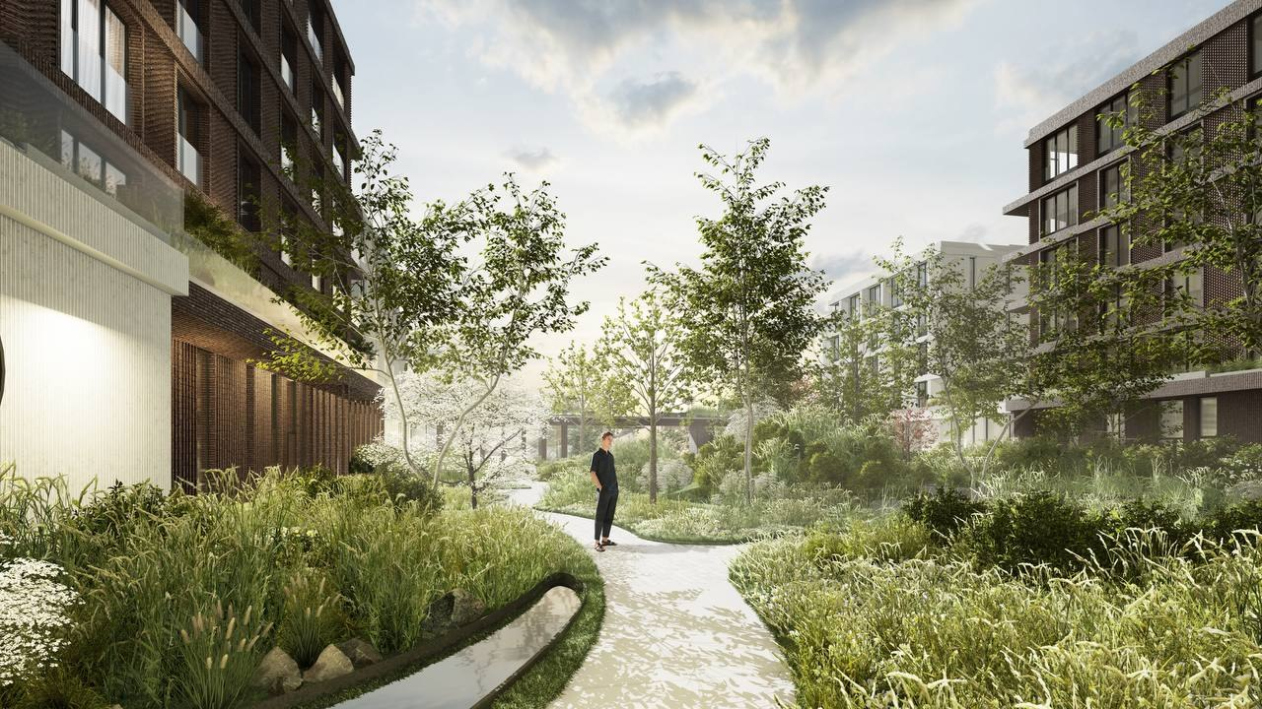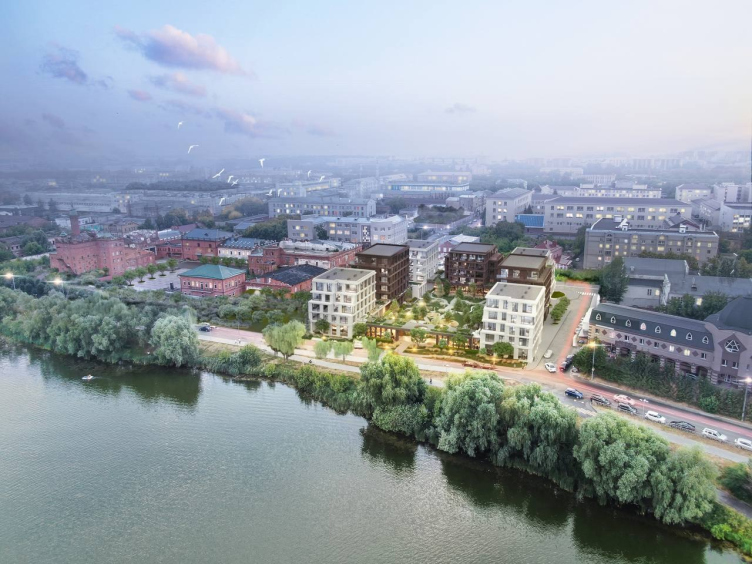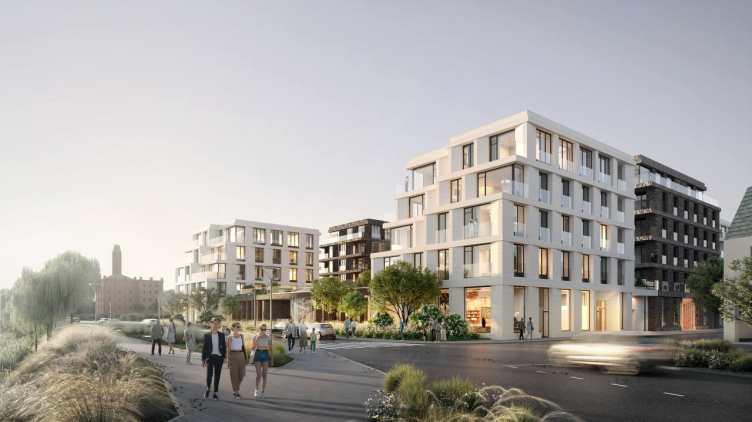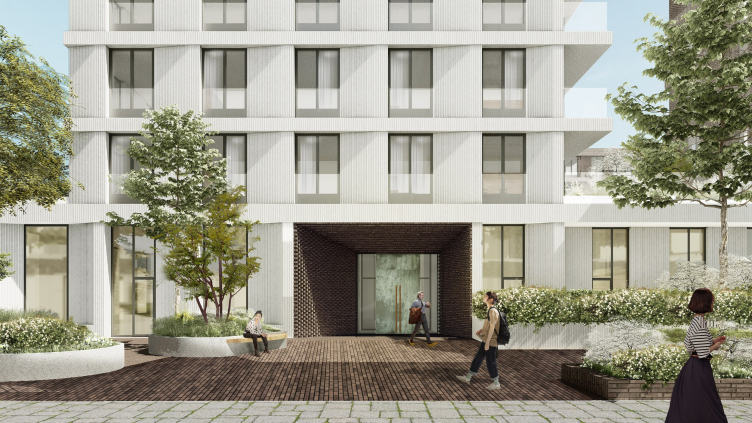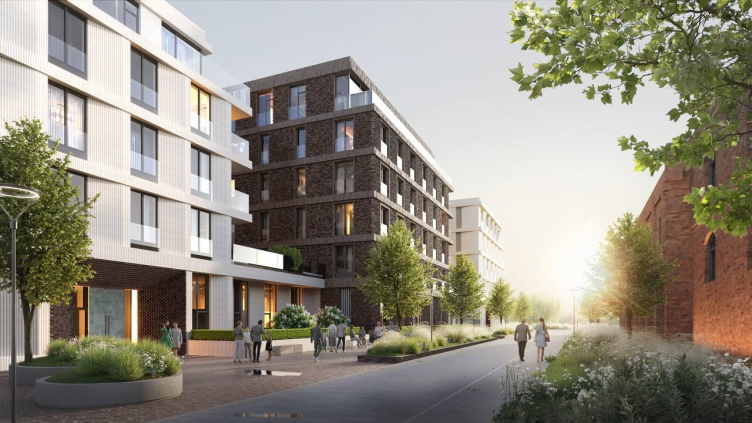It is not exactly the city center, but still its historical part, and in natural surroundings.
Concept of a housing complex in Kazan
Copyright: DNK ag
The complex is mid-rise, up to six stories high; from the lake side, its height decreases gradually in terraced steps. The plan of the complex is U-shaped – along its outer contour, the frame forms the front of the city development along the redlines, and from the lake side it opens up, connecting the private yard to the water area. This planning solution, which makes the most out of the lakeside location, is something that the DNK ag architects liken to the morphology of the historical construction: in Kazan, there are many houses, whose yards overlook the water. Back in the day, the city facade was the “grand” one, and the lakeside facade was the “backyard” one, and, accordingly, the complex also has two types of facades: the city type from the side of the three streets, and the “park” facade from the lakeside.
Concept of a housing complex in Kazan
Copyright: DNK ag
Concept of a housing complex in Kazan
Copyright: DNK ag
Since the northern neighbor in this particular case is a light-gray constructivist building, and the southern neighbor is a red-brick historic industrial building, the architects based their solution on contextual alteration of light-colored facades, with chamfers and and wide windows, and dark-colored facades of dark bricks. As for the piers, they are designed as a rugged “ribbed” surfaces, in which the bricks, turned with their corners exposed, create textural depth – this is a technique that DNK ag used in the project named RASSVET LOFT*Studio, 3.34.
Concept of a housing complex in Kazan
Copyright: DNK ag
Two light-colored sections overlook the water, then dark and light alternate, and do not fit closely: the stylobate of the first floor with shops and public spaces forms a solid contour, but above between the volumes there are quite spacious indents with terraces on the roof of the stylobate. As for the streets running along the buildings leading from Gabdulla Tukai Street to the lake, the authors propose to turn them into city promenades, which is further facilitated by new greenery and storefronts on the ground floors.
A special pride of the architects is the courtyard – it is planned as an abundantly landscaped mini-park, which, as we remember, overlooks the lake.
Concept of a housing complex in Kazan
Copyright: DNK ag
